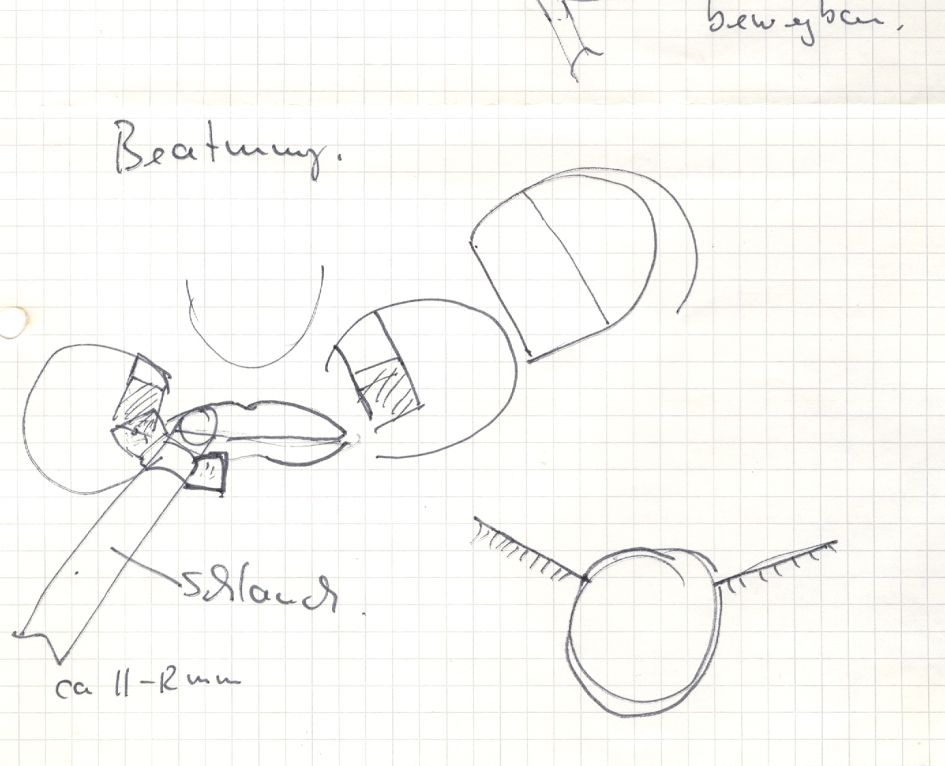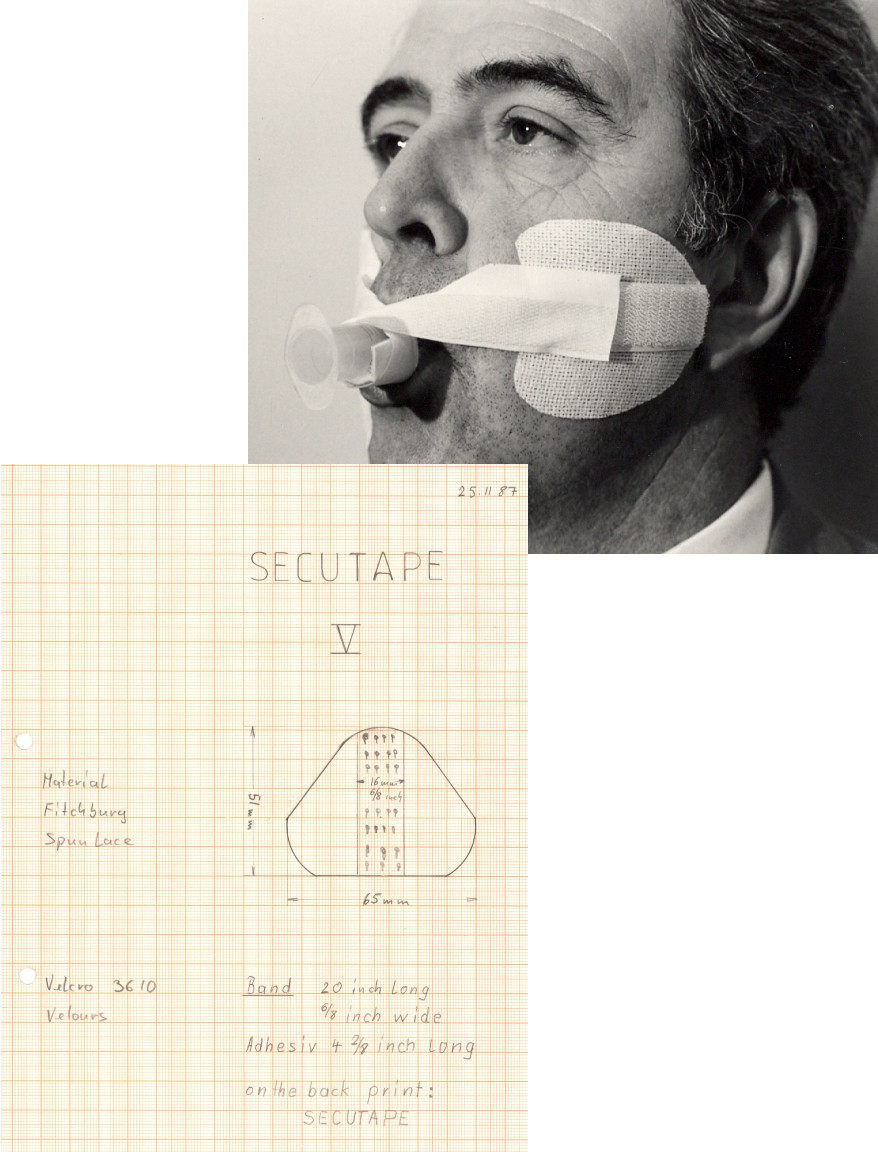History
How it all started ...
The SECUTAPE Story
Miami / Florida / Winter of 1985
A few friends are sitting together in Miami at lunch, a nurse, an attorney from Miami, a producer of labels from Los Angeles and a cardealer from Munich.
The nurse tells of her problems to fix tubes, especially stomach probes, on her patients. The plaster strips come loose again and again, and the patient’s skin gets damaged in the meantime, because the plaster needs to be torn away repeatedly.
It is discussed what can be done about it and it is arrived at the idea of a velcro, so that the plaster does not have to be torn away repeatedly.
The man from Munich and the one from LA do not give the idea a rest and begin to think and draw forms and concept in the sand of the beach.
SECUTAPE is born nameless...
Both fly to LA and begin to make samples. At first with scissors and then mechanically. And it works! As early as 1986, a patent was filed in the US and an authorisation at the FDA has been applied for. The admissions officer says as he sees the sample:
Hey, if you do not have any success on the market with this product, and do not sell millions of it, then I do not understand the world anymore…
The man was right! The idea to attach a plaster to the skin and fix a tube with a velcro to it is very successful!
It took time, but over the last 30 years, it has led to a whole series of fixations, that are now being used millions of time in many parts of the world.
The first three SECUTAPE fixations were still made out of two parts. There was a lower part with an adhesive and fleece and an upper part with the velcro-hook and a strip of adhesive. It held quite well, but shortly afterwards we came up with the idea of letting a strap be woven, which contains everything. The hook the fleece and the adhesive.

This has been holding even better and is much easier to handle.
And so it has remained until today!

Shortly thereafter, on a return flight from a trade fair in LA an idea appeared how to find a better method for fixing the Endotracheal tubes.
Apparently, flying makes one creative….
There were a couple of thoughts and sketches, from which a hand sample came up.

We have then tried out with great laughter the hand sample on my friend Dale.
Based on this, the tube fixation has emerged, which is now in use everywhere for over 30 years and has been copied in the last years.

At the time around 1998, we were constantly asked at trade fairs whether we had anything to fix nasal stomach probes. Our size 2 fixation would be so great for the PEG probes, but for the nasal ones there would only be plaster strips.

So, we sat down and have developed our patented two-piece nasal fixation, which has been used unchanged since then in the whole of Europe. Together with the holder we made a super high-tech to make a super high-tech strap first, but then had to realise that a simple strip tape with a velcro-fleece is easier and better….
And because I supposedly have the biggest nose, it has been tested on me.
Over the years we have received so many tips, hints and specific requests from our customers, that we have been able to expand our product range all the time.
Thus, we came up with the idea of our fixation for large lumens after we were asked if we had anything to fix the thoracic drains. This cannot be done properly if you use a plaster, especially if the tube is made of silicone, because adhesive does not hold at all on silicone.
We decided to use hydrocolloid, because we were told that for patients with skin damage the holders of our tube fixation would always be glued on a hydrocolloid plate. We have thought it is easier and cheaper if we already use hydrocolloid for the holders.

We began with straps for tube fixation, after we were told at a trade fair, that the customers are not quite satisfied with the foam straps available on the market. They would be wet after a short time, would stretch and you would have to change them all the time. But our adhesive pads would be too insecure for them, like they said.
Ok, so we took a nylon band as it does not stretch and it is also hydrophobic. This alone is nothing special; so, we put silicone straps on it not to have sharp edges. It even does not slip in the face.
It works truly well and many users love it.
It is funny that the same silicone strap is to be found on the great stockings of famous stocking brand from our region.  The material has been practically tested a millions of times by ladies.....
The material has been practically tested a millions of times by ladies.....
Sometimes we liked new materials so much that we tried to use it for a fixation. The velcro band is such a case. One of our suppliers showed us a foil, which simply adheres to every smooth surface, the Gecko foil; it has incredible 29000 gripping elements per square cm.

With this fixation, no adhesive is holding the tube, it is the GECKO foil which holds it. It does it over and over again and without leaving any residue.
Meanwhile, the Velcroband is used, among other things, for drivelines of artificial hearts, precisely because no adhesive is in the game.
Of course, there are now many copies of our ideas and products, but it comforts us, that only what is good is copied.
But it is not enough just to copy the form as cheaply as possible, or to imitate the function.
It requires high-quality materials, a lot of specialised know-how and trustful years of collaboration of a handful specialised manufacturers from different fields. This results in a true SECUTAPE fixation.
Not to forget: you have to stand behind your product and enjoy what you do, only then you are good at it.
Sincerely
Peter Piwonka sen.
P.S. We have a couple of new ideas. Let’s wait and see….



